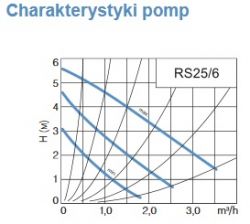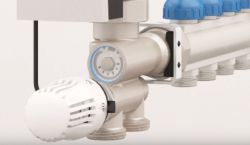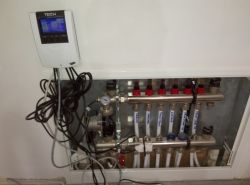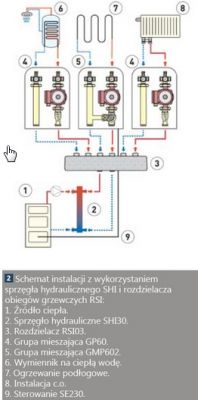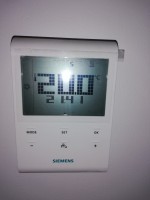Hello,
At the outset, I would like to mention that I have already read a lot and basically only the floor heating mixing set does not give me peace. Control with a weather sensor and curves seems quite reasonable, but I don't know if the mixing valve and thermostat will get along with it. Details below:
1. Stove: Ariston Class One 24kW - dual-function without a tray
2. Heating, two manifolds. Bottom pump with a mixing valve, top distributor for radiators and underfloor heating in the bathroom with return + RTL.
- whole bottom: floor covering with Emmeti TM3 mixer, 6 circuits. A total of around 55 m2. 2x living room, kitchen, office, bathroom and vestibule.
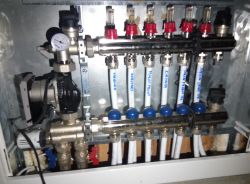
- top: 3 rooms on radiators with thermostats, bathroom, ladder with a thermostat, plus a floor on the return from radiators with RTL
3. Semi-detached house, 110m2, porotherm 24 + polystyrene 15, ceiling insulated with wool 25
4. In the living room there is a fireplace without a mantle
I do not have any detectors, internal thermostats or external sensor. The cottage was already equipped with the system as above. I was thinking about retrofitting the stove with a weather sensor and mastering the heating curve to maintain a constant temperature inside. Unfortunately, something tells me that the underfloor heating system is set with a thermostat to a rigid type and the weather with a selected curve will not help. The installer, unfortunately, of the old date and any changes to the heating system, says "Paaanie, it's just throwing money down the drain". The second option is heating with a stove for radiators, thermostats unscrewed to the maximum and manual regulation of the thermostat from the floor heating. A weather sensor will probably also be useful here.
I will be grateful for advice on how to effectively master this type of heating.
Regards.
At the outset, I would like to mention that I have already read a lot and basically only the floor heating mixing set does not give me peace. Control with a weather sensor and curves seems quite reasonable, but I don't know if the mixing valve and thermostat will get along with it. Details below:
1. Stove: Ariston Class One 24kW - dual-function without a tray
2. Heating, two manifolds. Bottom pump with a mixing valve, top distributor for radiators and underfloor heating in the bathroom with return + RTL.
- whole bottom: floor covering with Emmeti TM3 mixer, 6 circuits. A total of around 55 m2. 2x living room, kitchen, office, bathroom and vestibule.

- top: 3 rooms on radiators with thermostats, bathroom, ladder with a thermostat, plus a floor on the return from radiators with RTL
3. Semi-detached house, 110m2, porotherm 24 + polystyrene 15, ceiling insulated with wool 25
4. In the living room there is a fireplace without a mantle
I do not have any detectors, internal thermostats or external sensor. The cottage was already equipped with the system as above. I was thinking about retrofitting the stove with a weather sensor and mastering the heating curve to maintain a constant temperature inside. Unfortunately, something tells me that the underfloor heating system is set with a thermostat to a rigid type and the weather with a selected curve will not help. The installer, unfortunately, of the old date and any changes to the heating system, says "Paaanie, it's just throwing money down the drain". The second option is heating with a stove for radiators, thermostats unscrewed to the maximum and manual regulation of the thermostat from the floor heating. A weather sensor will probably also be useful here.
I will be grateful for advice on how to effectively master this type of heating.
Regards.




